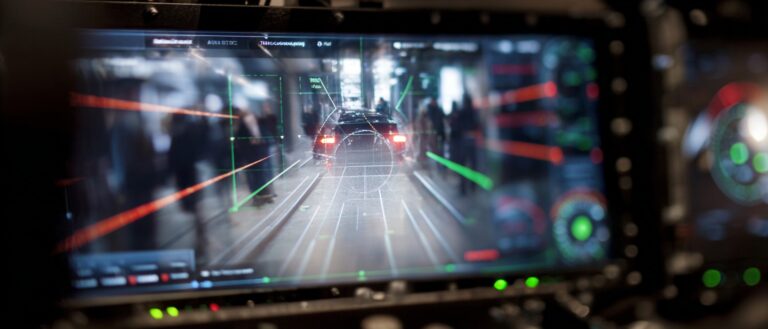During the National Day Holiday, How Can We Scientifically Deal With the Daunting Security Checks When Entering Beijing?

With the 70th anniversary of the founding of the People's Republic of China approaching, security checks at the entrance to Beijing have become a major difficulty. Long queues and slow security checks have triggered widespread social discussion. Can the development of artificial intelligence technology bring hope to the headache-inducing security check?
This year's National Day coincides with the 70th anniversary of the founding of the People's Republic of China. Many friends who have travel plans in the near future have lamented that "it is easy to leave Beijing but difficult to enter Beijing". In addition to express deliveries, there are also you who want to enter Beijing who are stuck on the road.

In fact, in addition to the traffic jam on the highways into Beijing, flights and trains arriving in Beijing have also encountered the same problem, all showing varying degrees of congestion. Adding secondary security check channels, upgrading spot checks to screening, and increasing security personnel... The first result of strengthening security check measures is a reduction in travel efficiency. In order to improve the security check level and speed up security check efficiency during the National Day travel peak, many black technologies have quietly been launched.
Gu'an Toll Station: "Face recognition" inspection is implemented throughout the line Gu'an Checkpoint
It is affiliated to Hebei Expressway and is the only way to enter Beijing from Hebei via Daguan Expressway. As a hub connecting Beijing and Hebei, Gu'an Station has a huge daily passenger throughput and the pressure of security inspection cannot be underestimated.

In the past, when entering Beijing and passing through the Gu'an checkpoint, passengers were required to submit their ID cards for verification, and sometimes even the passengers in the car were required to get off. The security personnel would confirm that the ID card and the person were consistent and there were no dangerous items in the car before they would let them pass. Excluding the waiting time, this process took about 3-5 minutes per car.
During this important period, the Gu'an Checkpoint has fully launched fast self-service channels for passenger and vehicle security checks, using technology to assist with security checks when entering Beijing.
The new security check channel has added vehicle recognition and face recognition systems, with two cameras installed on each side of the road to ensure rapid security checks through rapid video recording.
During the inspection process, people do not need to get out of the vehicle after it enters. They just need to open the trunk and look at the camera on their side. The computer can then quickly identify the relevant information. The entire security inspection process takes no more than 2 minutes.

By adding AI technology to the security inspection field, not only can the inspection efficiency be greatly improved, but also human omissions can be avoided, ensuring a safer journey.
Syntech ONE: A second pair of eyes on the conveyor belt
When it comes to security checks, we are all familiar with security check machines and conveyor belts. No matter which mode of travel you choose, large luggage, bags, etc. cannot be separated from security checks.
However, in traditional security checks, operators are required to keep an eye on the security screen and look for potential dangerous objects and prohibited items in the X-ray images of luggage. This method relies on human judgment, is slow and may lead to omissions.

So here comes the AI system. Syntech ONE is a platform that automatically identifies potential threats in X-ray images. It uses advanced AI and computer vision technology to enhance images and automatically detect a variety of dangerous weapons and items.
By processing X-rays, the system can quickly identify dangerous items such as knives or guns, and mark dangerous areas with flashing red frames to help operators quickly locate them and reduce the missed detection rate. In addition, the system is perfectly compatible with mainstream security inspection machines.

Syntech ONE, based on deep neural networks, uses the object detection method to train the AI model with a large number of X-images marked with dangerous goods, thus having the ability to identify dangerous goods. In addition, it also uses multiple detection models to integrate, greatly reducing the missed detection rate.
In addition to being faster, the system also outperformed humans in terms of accuracy. In simulated validation experiments, inexperienced operators assisted by the AI system were able to outperform trained X-ray operators.
In multiple experiments, the false alarm rate of Syntech ONE on cutting tools was 0.3%, on guns 0.01% , while the detection rate of guns is 99% above.

It is reported that Syntech ONE has been widely deployed and has processed more than 6 millionThe U.S. Department of Homeland Security (DHS) awarded the technology a Security Act award.
Evolv Edge: No-stop security check at the door
In daily life, security gates are devices used in conjunction with security inspection machines. However, a sufficiently "high-end" security gate can completely stand on its own.
Evolv Edge is a security gate that combines facial recognition and machine learning technology. When someone passes through Evolv Edge, the system can identify the person's identity information within 1 second without stopping, and detect dangerous items such as explosives or guns.

Unlike previous airport security checks that required emptying pockets and checking people and luggage separately, Evolv Edge uses a millimeter-wave scanner that can directly identify metal and non-metal products (such as 3D printing guns and explosives) and classify metal products as dangerous or non-dangerous. The machine will automatically ignore items such as keys and belt buckles and directly judge them as "safe."
If a passenger is carrying anything suspicious, that area will be automatically marked in the computer image to alert security personnel. If not, an "All clear" mark will be displayed.
According to the official introduction of Evolv Edge, after installing this security gate, up to 800 people can pass through in an hour, greatly improving throughput and case efficiency.

Evolv Edge has been deployed to Oakland International Airport in the United States to screen employees, and will later be launched at another major international airport in the United States and open to security screening passengers.
The future of smart security
Security check is not aformalThe process concerns the safety and stability of public places and is an indispensable step in maintaining security.
In addition to coinciding with the grand ceremony, security check is also an important part in our daily life.AIAs technology matures, within a few years, AI will completely overturn the traditional security inspection model.Smart securityThe city will be fully covered more efficiently and accurately.
At that time, there should be no more long queues and limited security checks when entering the subway station during rush hours in the morning and evening.

-- over--





